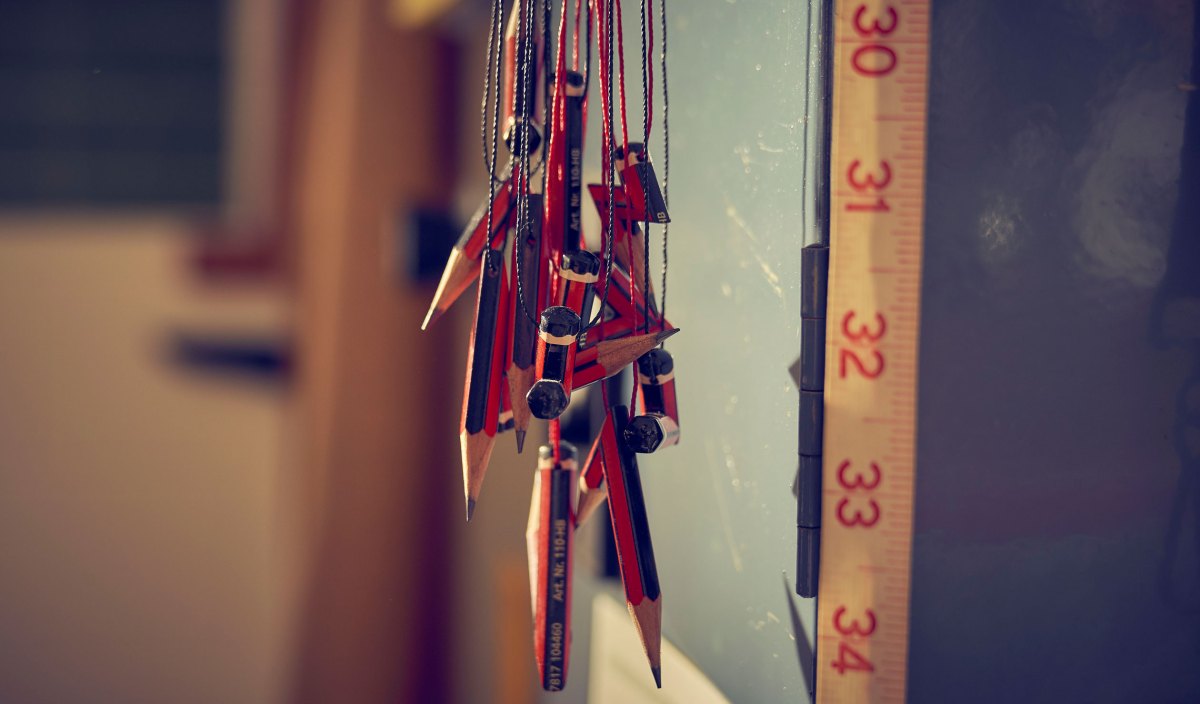In the studio with Sue Lorraine
At Thebarton’s Gray Street Workshop, Sue Lorraine creates intimate works that are made to measure.


Sue Lorraine with new works that channel Edvard Munch and her own despair at being separated from her mother during COVID. Photo: Aubrey Jonsson
“I’m like a pig in mud, really,” Sue Lorraine says from the converted house and backyard studio that Gray Street Workshop has called home for the past five years.
Eight months ago, Lorraine stepped away from her second job to work full-time in the long-running workshop she co-founded decades ago – and she hasn’t looked back.
“It’s sort of like a friendly, supportive, home-like environment in which to make things,” she explains. “We all have our own little areas, and nooks where we work, experiment with things.”
In her nook, Lorraine has been making “fairly modest and humble” pieces with “an intimate scale”. “I have a slow making process. I like to spend time with things, do a lot of little experiments.
“They’re not big; they’re all hand-held-type things, so they relate quite strongly to the body even if they’re not wearable. They’re still of a scale that’s intimate and domestic.”

Sue Lorraine in her ‘nook’ at Gray Street Workshop. Photo: Aubrey Jonsson
Time and scale have informed much of Lorraine’s work over the past five years, stemming in part from reflections that followed the death of her father, Hans Lorraine.
“My sister and I were cleaning out all his possessions, as you do, and I was interested in the things he kept, and the things from his estate that I kept, really, and their personal significance to him and me. I was just interested in exploring these objects.”
The 2017 exhibition Precisely saw her practice “slightly shift”, drawing on found materials for the first time as Lorraine reflected on her father’s life as an architect and artist through his possessions.
“It was not something I’d done much of before. I reinterpreted them, and paid homage to my father’s modest and precise life, and from looking at those objects I became interested in the way he marked things and his relationship, in particular, to time. And,” she adds, “his anxiety about time; being on time, having enough time, making time.”

A bunch of pencil cut-offs are part of a work called Daily Tally. Photo: Aubrey Jonsson
Next came Measured at Melbourne’s Gallery Funaki in 2019, and now Lorraine is working on a much-delayed follow-up to be exhibited later this year in Christchurch, New Zealand. Inevitably, the upheaval of the intervening three years has informed Measured #2 in big and small ways.
“If I had to sum up the last couple of years, I’d say they went really quickly, but they stood really still – some bits I can remember, some bits I can’t.
“Obviously things have changed – the fires, the pandemic – our relationship to measurable and unmeasurable aspects of time and distance and safety has changed. We all know a lot more about what 1.5 metres looks like now, and just our relationship to being close to people, physical distance has all changed. So has our relationship to time, I think.”

Small plaster faces frozen in a scream. Photo: Aubrey Jonsson
Around her studio are various works-in-progress, from small plaster faces frozen in a scream (channelling Edvard Munch and Lorraine’s own despair at being separated from her NSW-based mother), to a dangling bunch of lead pencil off-cuts.
“They look a bit crazy,” she says of the pencils, which are part of a work called Daily Tally. “When they’re finished they will go into compasses – those ’70s brass compasses that used to be on every school desk. They were really just a response to watching the television every night and seeing that fellow on the ABC with his graphs and charts on COVID.”

A bronze cast of a personal item owned by Sue Lorraine’s stepmother. Photo: Aubrey Jonsson
Another piece is a bronze cast of a vintage model of a hand, finger pointedly outstretched: “That comes from a personal item from my stepmother; she had a very kitsch, plastic little hand that held shopping notes and stuff.”
Rendered in burnished metal, its flowery message of “Don’t Forget” finds a new gravitas. “I just thought in this particular time, as we’ve got a war going and pandemic still around, the sentiment ‘don’t forget’ was quite pertinent.”
It’s a piece, and a message, that goes hand in hand with the broader sweep of Lorraine’s recent work.
“It’s an interesting thing, using found objects; they come with their own history and nostalgia and people’s interpretation of them. I suppose by working with them and tweaking them I’m making them more of a witness to now, rather than the past.”
Read more about Sue Lorraine’s art practice and Gray Street Workshop here.

Sue Lorraine now works full-time at Gray Street Workshop. Photo: Aubrey Jonsson
In the Studio is a regular series presented by InReview in partnership with not-for-profit organisation Guildhouse. The series shares interesting stories about South Australian visual artists, craftspeople and designers, offering insight into their artistic practices and a behind-the-scenes look at their studios or work spaces. Read our previous stories here.




